But a bike you probably won’t hear mentioned is a certain 250cc dual-purpose single that debuted in the socially volatile year of 1968. This motorcycle wasn’t just hugely significant for Yamaha’s reputation and financial coffers but one that elbowed the entire Japanese motorcycle industry in an all-new and extremely popular direction. What’s more, it is a perfect example of that rare situation in motorcycling when the perfect machine was developed at the perfect time for what was a perfect customer base.
Longtime Yamaha product-planning guru Ed Burke was involved with the bike's development as well as bikes like the 650 Special and V-Max. "The DT-1," he says, "was one of the best examples of a company bringing a model to market in a nearly perfect way. Yamaha had wonderful two-stroke technology to tap into. It had great research to guide it, with Japan trusting the US product planners implicitly. What engineers came up with was nothing short of a blockbuster motorcycle, one that did everything well. Enthusiasts loved it. New riders loved it. Racers loved it. The aftermarket, which grew substantially because of this motorcycle, loved it. And dealers loved it."
Yamaha loved it too because the company sold nearly 50,000 DT-1s that first year. That’s an unbelievable number in this day and age when a 5,000-unit seller is considered a success. But it highlights perfectly how ripe the bike market was in the late 1960s and early 1970s, when baby boomers were coming of age and discovering the joys of two-wheeled fun.
"Boomers began turning 16 in about 1961," Burke says, "and millions followed in the next 15 years." Some were gear heads and adventure lovers, people with a natural affinity for motorcycling. Many more, however, were mainstreamers, people who needed a bit of a nudge to ride motorcycles—one provided by clever marketing like Honda's "You Meet The Nicest People" campaign and various bits of pop culture such as The Wild One and On Any Sunday.
Japanese offerings in the early and mid-’60s were typically smaller bikes, but what they lacked in displacement they surely made up for in practicality, affordability, and durability. By the later ’60s, however, those buyers were hungry for more—more cubes, more power, and more prestige. On the street side they’d get that in the form of the CB750 and Mach III, though they wanted more on the dirt side too. Hard-core riders swooned over machines from Husqvarna, Maico, Bultaco, and OSSA, but mainstreamers wanted (and needed) something less expensive, more reliable, and easier to get parts for.
Into that marketplace Yamaha thrust the DT-1, which smacked a whole generation of dirt and street riders right across the forehead. It was a decent streetbike and a pretty good off-road bike and racer too. It was reasonably fast and handsome, and it only cost about $750. The thing moved like free beer, and by 1971 Yamaha had expanded the line to include a 90 (HT-1), 125 (AT-1), 175 (CT-1), and 360 (RT-1), with off-road/MX variants of several of those, including a 60cc version called the JT-1 Mini Enduro. “Looking back on it,” Burke says, “the DT-1 just might be Yamaha’s most important motorcycle ever.”
After kick-starting motorcycle production in Japan in ’53 with its 125cc YA-1, Yamaha began selling bikes in the US in ’58, initially under the Cooper Motors umbrella and, two years later, through its own dealers. Yamaha’s two-stroke bikes improved every year, with hot rods such as the ’63 250cc Ascot Scrambler and the company’s unique Autolube system in ’65 buttressing Yamaha’s brand and reputation.
It was under those market conditions—increasing sales for Japanese bikes and off-road riding and racing gaining popularity—that Yamaha began work on the DT-1 in early ’66. The seeds of the idea for its first true dual-purpose machine came from some off-road enthusiasts working for Yamaha at the time—desert riders and racers, and some dealers too.
Jack Hoel, son of J.C. “Pappy” Hoel of Sturgis fame and a Yamaha product planner, was one. “Pappy owned the Yamaha dealership in Sturgis at the time,” ex-Yamaha man Tom Berkley says. “Yamaha built road bikes and was using styling changes to make them look like off-road models—the scramblers. Jack helped convince the factory to rethink the direction, his inspiration coming from real enduro bikes from Montesa and Bultaco and the like.” Hoel and others hit the nail on the head with a serious dual-purpose concept. And the rest, as they say, is history.
“Guys like Hoel, Tom Clark, Terry Tiernan, Sam Corona, and others were key,” Burke says. “They were all enthusiasts…racers, riders, and fans. I wish I could take credit for the bike, but I wasn’t involved nearly as much as these guys.”
The key was the then-emerging dual-purpose market, which showed promise. “Yamaha felt it could be huge,” Burke says. “The bike had to be decent on the street, good on the dirt, and have the potential for more power, which is where our GYT (Genuine Yamaha Tuning) kits came in. If it was all this and affordable, too, we felt we’d have a hit on our hands. We did a lot of the testing and development here. Yamaha Japan was smart to trust the US guys.”
Yamaha followed a standard development process with the DT-1, starting with sketches and moving to clay models and then to rough (mule) prototypes. Meanwhile, engineers developed a piston-port 246cc two-stroke single, incorporating Yamaha’s then-new Autolube oil-injection system, making premix a thing of the past. In ’67, advanced prototypes were tested in the US in eastern (woods) and western (desert) environments, and slowly but surely, engineers achieved what they wanted: solid-handling, 22-plus hp, and, maybe most importantly, hammer-like reliability.
The DT-1’s debut in late 1967 created a stir, dealers signing up for as many bikes as they could get and national magazines spreading the word. “The DT-1 handles infinitely better than the usual hybrid street-scrambler,” Cycle wrote in its May 1968 issue. “Considering the number of genuine motorcycle enthusiasts at Yamaha, it was inevitable the finished product should be right on target—and it certainly is.” John M. Larsen wrote in our October/November 1968 issue that the DT-1 “comes the closest to filling the needs of the sports-minded off-the-road rider of any bike produced at home or abroad.”
Enthusiasts bought DT-1s by the boatload, but it was the mainstreamers who had the largest impact on motorcycling. “The DT-1 blew mainstream motorcycling wide open,” says Jack Seaver, longtime racer and Yamaha dealership employee during the early 1970s. “It created a big buzz and appealed to a wide range of riders. Experienced enthusiasts, for sure, but also a more mainstream rider who was hooked by the bike’s good looks and all-around abilities. These guys wanted the bike’s perceived off-road clout even though most never even took the thing off the pavement.”
But many did, of course, and they found the bike reasonably light, capable, and fun. As a racer it wasn’t great out of the box, but with targeted modifications and go-fast parts from the factory and the aftermarket—chambers, carburetors, tires, shocks, etc.—you could turn the DT-1 into a motocrosser, a desert or woods machine, or even a flat-tracker. The Jones family—Gary, DeWayne, and father Don—had maybe the most success here, turning the bike into a championship-winning motocrosser and helping Yamaha develop the DT-1 into the legendary YZ250, which hasn’t stopped winning since.
Sales were unreal, with some dealers selling as many as 1,000 DT-1s per year. “Yamaha has done something else which speaks for all their line,” Larson said in our 1969 issue. “When we first inquired with the local dealer about getting a DT-1 for test purposes, he told us that he had seven machines already sold. The remarkable thing about this is that it was to be three weeks before the first DT-1 ever got into town!”
Doubly amazing was the effect the bike had on the rest of the industry. Within a few years Yamaha offered an entire line of dual-purpose bikes, and of course the other Japanese manufacturers followed suit. Soon, America’s streets, trails, and tracks were full of the things. In many ways, dual-purpose bikes opened the floodgates to the industry’s phenomenal growth of the early ’70s by appealing to a more mainstream rider and introducing many thousands of relative newbies to the sport of motorcycling. And the DT-1 kick-started it all.
“The DT-1 was not the world’s first dual-purpose bike,” longtime motojournalist David Edwards says. “But do you remember the Bultaco El Montadero or the Montesa Scorpion? You do not. What the DT-1 was, really, was the world’s first practical, affordable, viable dual-purpose bike, one that spawned imitators by the dozens; within a few years, 60 percent of new-bike sales in the US were dual-purpose.”
Shall we consider the “most important Yamaha” question once more?











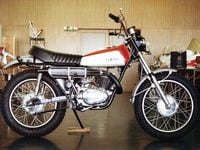
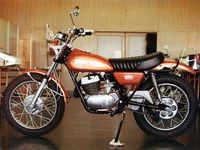
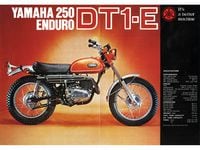



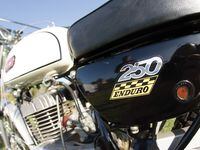
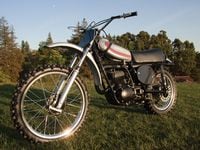
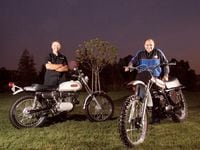
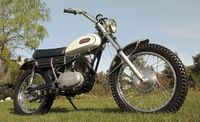
/cloudfront-us-east-1.images.arcpublishing.com/octane/TNOU5DNE2BC57MFPMGN2EIDXAM.jpg)
/cloudfront-us-east-1.images.arcpublishing.com/octane/GTCXACQGJ5HAPDTGWUQKDEH44E.jpg)
/cloudfront-us-east-1.images.arcpublishing.com/octane/S35YGSEMEZB4BLTDJTSZPF4GLA.jpg)
/cloudfront-us-east-1.images.arcpublishing.com/octane/5UOT6HPX2JFMRJAX6EH45AR4MQ.jpg)
/cloudfront-us-east-1.images.arcpublishing.com/octane/OKWOJWAKP5EP3OACCRRWPCIX2Q.jpg)
/cloudfront-us-east-1.images.arcpublishing.com/octane/2WF3SCE3NFBQXLDNJM7KMXA45E.jpg)
/cloudfront-us-east-1.images.arcpublishing.com/octane/G4MG6OUCJNBSHIS2MVVOTPX65E.jpg)
/cloudfront-us-east-1.images.arcpublishing.com/octane/IIGGWFOTOJGB7DB6DGBXCCMTDY.jpg)
/cloudfront-us-east-1.images.arcpublishing.com/octane/QSTCM6AVEZA5JJBUXNIQ3DSOF4.jpg)
/cloudfront-us-east-1.images.arcpublishing.com/octane/U4I7G625B5DMLF2DVIJDFZVV6M.jpg)
/cloudfront-us-east-1.images.arcpublishing.com/octane/B6XD6LS6IVCQPIU6HXDJSM3FHY.jpg)
/cloudfront-us-east-1.images.arcpublishing.com/octane/ICL63FEDDRDTTMINYICCEYGMDA.jpg)
/cloudfront-us-east-1.images.arcpublishing.com/octane/FCGZHQXRBZFLBAPC5SDIQLVF4I.jpg)
/cloudfront-us-east-1.images.arcpublishing.com/octane/WNOB6LDOIFFHJKPSVIWDYUGOPM.jpg)

/cloudfront-us-east-1.images.arcpublishing.com/octane/X33NU3E525ECRHXLNUJN2FTRKI.jpg)
/cloudfront-us-east-1.images.arcpublishing.com/octane/6KKT5NNL2JAVBOXMZYS5ZO76YA.jpg)
/cloudfront-us-east-1.images.arcpublishing.com/octane/J5RKG5O455GMPGQRF2OG6LRT7A.jpg)
/cloudfront-us-east-1.images.arcpublishing.com/octane/GX2CIZKQVRH2TATDM26KFG2DAE.jpg)
/cloudfront-us-east-1.images.arcpublishing.com/octane/ZWIDYSAKQZHD5BHREMQILXJCGM.jpg)
/cloudfront-us-east-1.images.arcpublishing.com/octane/CYUHJZCTSJCH3MRAQEIKXK7SCQ.jpg)
/cloudfront-us-east-1.images.arcpublishing.com/octane/LKOFINY56FCXJCANJ5M7ZDQUBY.jpg)
/cloudfront-us-east-1.images.arcpublishing.com/octane/4NBPDACMWJH63JQYJVK3QRBDZI.jpg)
/cloudfront-us-east-1.images.arcpublishing.com/octane/KKHQHRR3FJGX7H2IPU6RALMWG4.jpg)